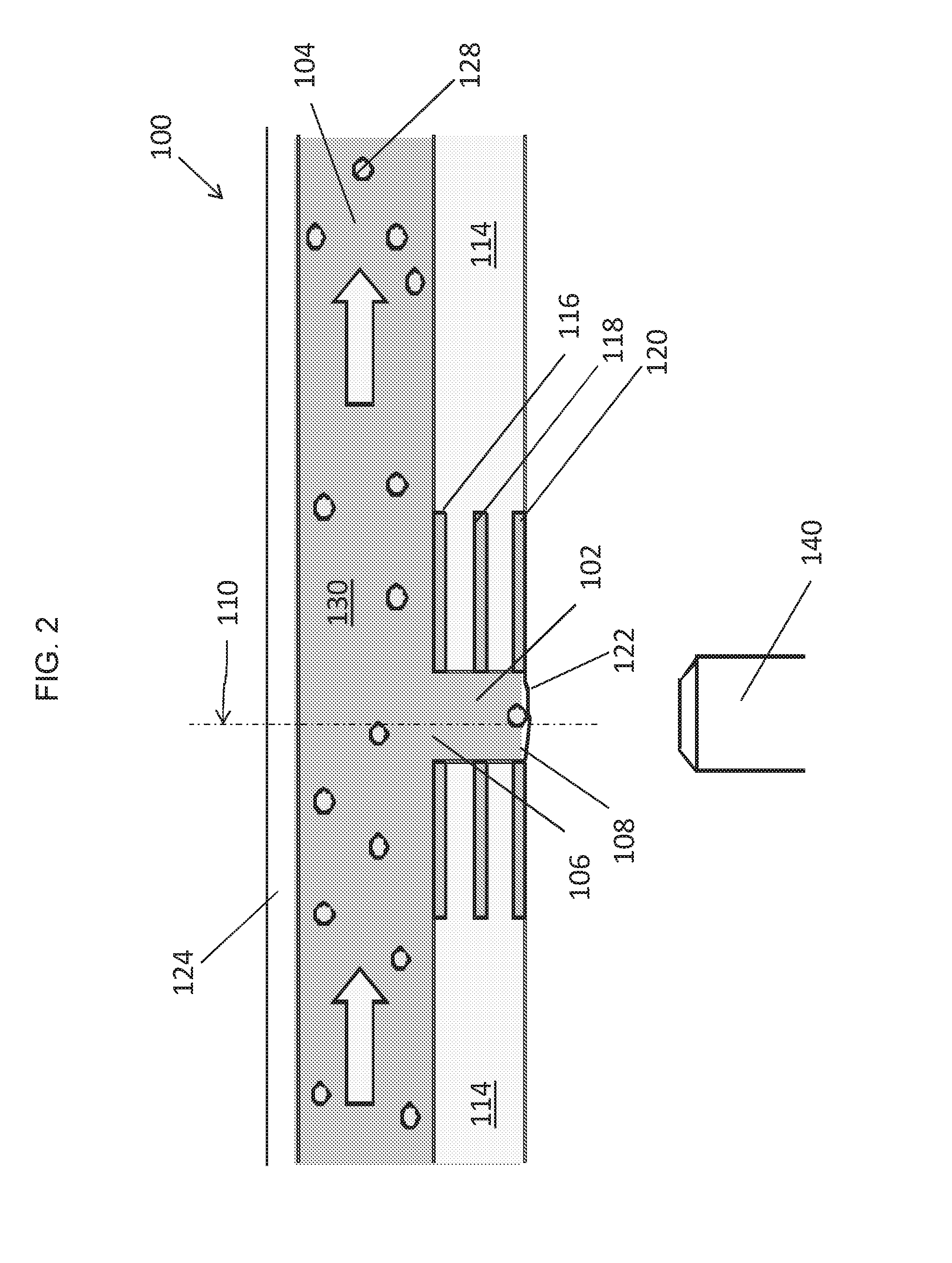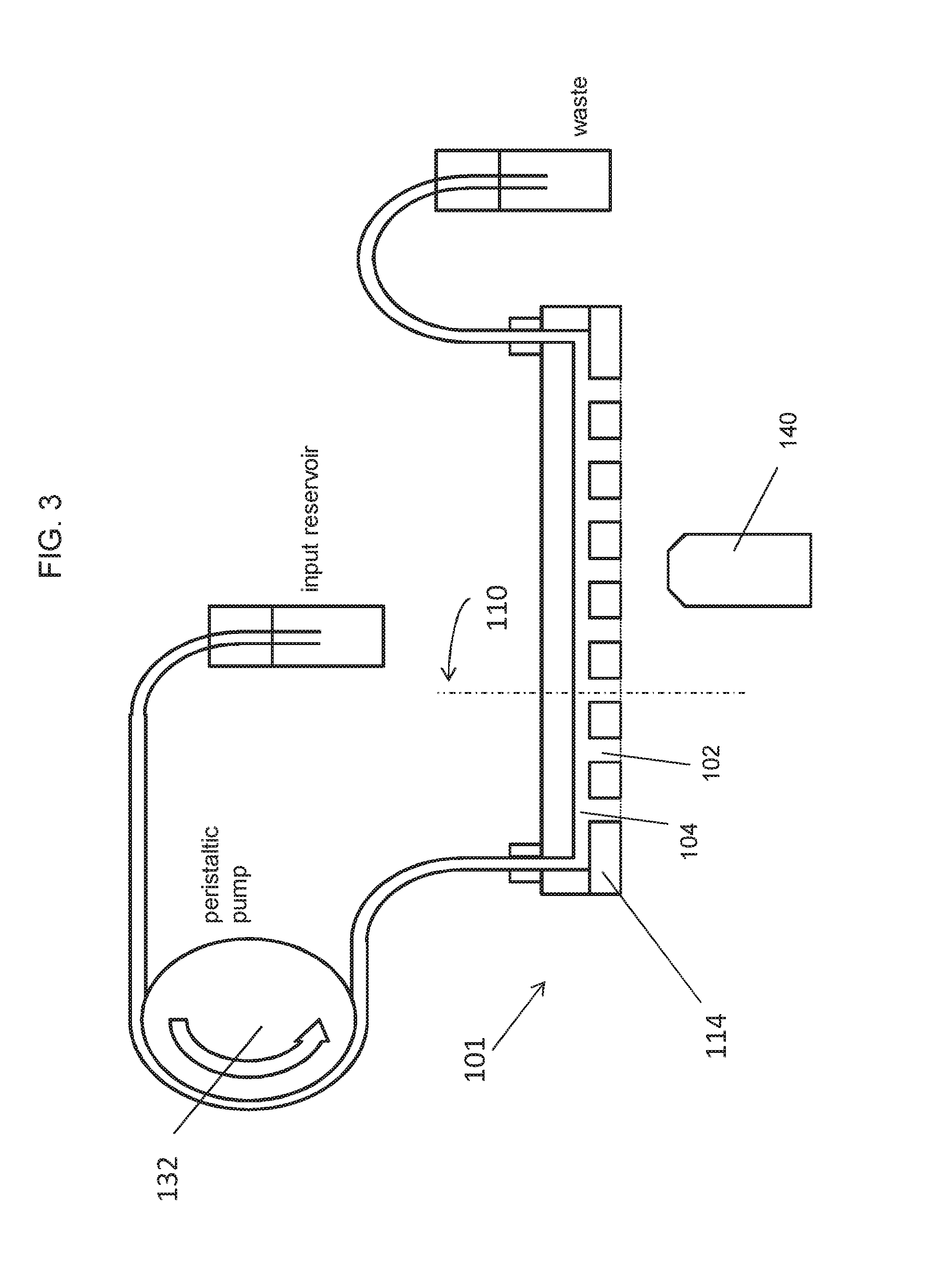Microanalysis of cellular function
a micro-analysis and cellular technology, applied in the field of micro-analysis of cellular function, can solve the problems of lysis, cell death, and/or cell death, and achieve the effect of rapid and efficient testing of particle-to-particle interactions
- Summary
- Abstract
- Description
- Claims
- Application Information
AI Technical Summary
Benefits of technology
Problems solved by technology
Method used
Image
Examples
example 1
Analysis of Fabricated Microchannel and Microwell Geometries
1.1 Fabrication
[0151]A device containing a plurality of open microwells was created by drilling through holes through a multilayer flexible printed circuit board (PCB) substrate. The dimensions of the microwells were varied to analyze the effectiveness of specific geometries of the microwells. In this study, the diameter of the drilled holes ranged from 70 μm to 150 μm, PCB thickness was between 75 μm and 350 μm, and each device included a matrix of 6×6 or 8×8 holes. Preferred implementations were prepared as shown below in Table 1 in order to directly interface the open microwell array to standard microtiter plates and easily perform the recovery and transfer of cells into microtiter wells.
[0152]Microchannels 104 having a thickness ranging from 30 μm to 200 μm and a width ranging from 200 μm to 1 mm were fabricated of polyimide, on the top side of the plurality of microwells 102, disposed above the upper end 106 of the mic...
example 2
2.1 Recovery of K562 Cells after Delivery and DEP Focusing
[0169]Use of the inverted open microwell system for analysis of single cell function permits recovery of cells determined to have desired properties. After trapping single cells and / or particles, for example, each in one of a plurality of microwells, for example in a microwell array, cellular function can be analyzed by one or more bioassays. When a particular cell is identified as having one or more desired characteristic or function, the content of each microwell can be recovered and transferred to a substrate such as a microtiter plate.
[0170]A device having the features shown in FIG. 5 was developed to enable cell recovery from the inverted open microwell. To release contents of the microwells, a pressurized filtered gas such as nitrogen or air is inserted into the microchannel 104 in a controlled manner. For example, a pulse of pressure of about 1 bar was be applied through a connection at the input of a normally closed e...
example 3
Cell-Cell Interaction Analysis
3.1 Activity of CTL Cells Against Target LCL Cells
[0176]Functional live cell-cell interactions in the inverted microwell system were demonstrated by induction of cell lysis by T-lymphocytes on target tumor cells. Target cells, LCL cells, were marked with calcein and delivered to microwells. T-lymphocytes (CTL) were activated against the target cells and delivered to the same microwells. Fluorescence of the target cells was monitored by fluorescence microscopy and the calcein fluorescence profile was determined as a measure of cell lysis.
[0177]Activated CTL cells induced a consistent decrease in fluorescence of the target cells as compared to negative control. Shown in FIG. 7, within 20 minutes the observed fluorescence of the live target cell was diminished and extinguished, demonstrating effective lysis of the target cell induced by the CTL, an effective analysis of specific cell-to-cell induced interaction and measured functional result, within minute...
PUM
| Property | Measurement | Unit |
|---|---|---|
| height | aaaaa | aaaaa |
| humidity | aaaaa | aaaaa |
| thickness | aaaaa | aaaaa |
Abstract
Description
Claims
Application Information
 Login to View More
Login to View More - R&D
- Intellectual Property
- Life Sciences
- Materials
- Tech Scout
- Unparalleled Data Quality
- Higher Quality Content
- 60% Fewer Hallucinations
Browse by: Latest US Patents, China's latest patents, Technical Efficacy Thesaurus, Application Domain, Technology Topic, Popular Technical Reports.
© 2025 PatSnap. All rights reserved.Legal|Privacy policy|Modern Slavery Act Transparency Statement|Sitemap|About US| Contact US: help@patsnap.com



